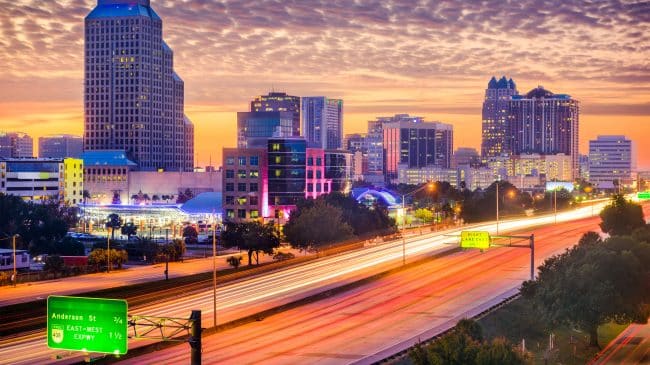Every year our organization, Reason Foundation, uses data reported by state departments of transportation to the federal government to show and rank the performance of state highway systems relative to one another.
This is the 24th year of our Annual Highway Report, and Florida came in 40th. That’s definitely not where any of us wants the state to rank on something as important as transportation performance and cost-effectiveness. But if we look at some of the factors that lead to this result, we can see where the challenges lie.
On the positive side, Florida does very well on the pavement condition of state highways. And compared to most other states, Florida’s maintenance of roads and bridges, in both cities and rural areas, is outstanding.
Unfortunately, that high performance comes at a high price. On overall expenditures per state-controlled lane-mile of highway, Florida comes in at 49th. In most of the spending categories, Florida tends to spend three to five times as much money as other states. To be fair, Floridians get good road conditions and sound bridges from that, but there are other states in the top 10 on road conditions that spend far less than Florida does to get there. So a great area for Florida leaders and the Florida Department of Transportation to focus on would be figuring out ways to be more cost-effective. That is not always easy, but there are some states worth looking at. Alabama and Tennessee, for example, have pretty good road conditions at a fraction of what Florida spends, so there might be something to learn from them.
Florida ranks 42nd in overall fatality rate on state highways, which, for those of us who drive here and have loved ones who drive here, is terrible to see. But it is hard to see what more the state government could do, and especially the department of transportation, to improve this ranking, in part, because Florida is one of the most tourist-laden states in the country with many foreign and unfamiliar drivers navigating the roads. Our economy depends on them, so we don’t want to discourage them from driving. But the state should continue its already strenuous efforts to encourage safer driving behaviors.
There’s not a lot about the way the roads are built or maintained that could make a big difference on road safety. Florida has an extremely high rate of pedestrian/auto accidents but reports there is blame on both sides. Pedestrians struck by cars are typically crossing outside of a crosswalk or in unsafe conditions. Drivers for their part are typically speeding and/or distracted when they strike a pedestrian. You can’t really design a road to improve those factors much, with some exceptions. There have been some interesting experiments and using different kinds of signs and flashing signals to mark crosswalks, but again that affects people who are crossing at the crosswalk.
Separating pedestrians and bicyclists from auto traffic would be effective but costly. Likewise, making sure there are sufficient crosswalks commensurate with pedestrian traffic would help a lot as well. But the bottom line is that most of the problem is with the drivers and pedestrians involved in the accident, and it’s they who have to change.
Finally, Florida ranks 40th on urban area congestion. Florida is growing rapidly, and the transportation system needs to accommodate that growth. Decades of investing in public transit, pedestrian access and bicycle trails has appreciably increased the share of travel that happens on those modes. In Florida’s cities, at least 90 percent of all travel is still by car and that isn’t going to change anytime soon. So the only way to reduce urban traffic congestion is to increase capacity. That should be a combination of more managed lanes on the freeways, integrated with more-flexible bus rapid transit systems, improved intersection design and arterial expansion where necessary or possible. That could be costly and complicated, but so is congestion.
The bottom line for Florida’s highway performance is it’s doing very well in some areas but its good results come at a high price. The state has some challenges not entirely in its control, while ether are other areas where it can clearly take policy steps to help improve. The whole point of the Annual Highway Report is to highlight that kind of thing and show other states that might have some ideas worth borrowing. Let’s hope transportation planners in Florida are willing to do that.
This column was originally published in the Sarasota Observer.

